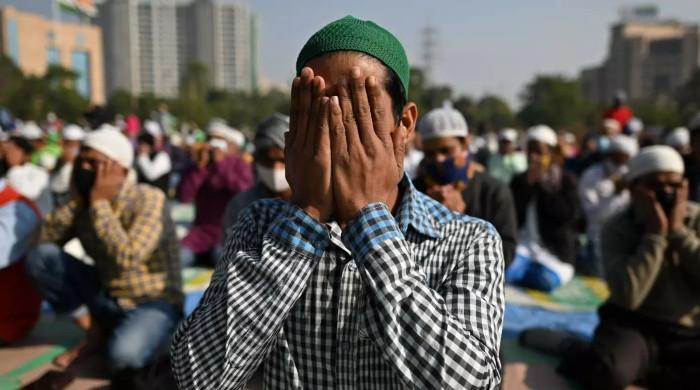Vice President Kamala Harris’s late entry into the presidential race against former President Trump reset the political playing field in important ways, giving Democrats a promising boost in the polls and a huge infusion of money and volunteers. But it didn’t change everything.
In a nation of more than 330 million people, the 2024 election, like those in 2016 and 2020, will almost certainly be decided by a relatively small number of voters in a handful of battleground states, political experts said.
When Hillary Clinton lost to Trump in 2016, it was by fewer than 80,000 votes in Wisconsin, Michigan, and Pennsylvania combined. When President Biden beat Trump in 2020, it was by fewer than 50,000 votes in Wisconsin, Arizona, and Georgia.
Now, Harris is in a full-throttle race to begin executing her own path to victory through the country’s battleground states, which include Pennsylvania, Michigan and Wisconsin (three of the “blue wall” states that lean Democratic) and Georgia, North Carolina and Arizona in the country’s Sun Belt. This week, she is expected to choose her running mate (possibly from one of those states) and begin holding major rallies in places like Philadelphia, Detroit, Raleigh, North Carolina and Savannah, Georgia.
Amid the high-stakes calculations campaigns always make to determine how best to secure victory, Harris’s campaign cites polls showing she is closing the gap with Trump in nearly every battleground and appears more optimistic than Biden’s campaign. On the question of whether Harris might focus on the blue wall or the Sun Belt, her campaign’s answer has been both.
Harris speaks at a black sorority meeting in Houston last week. One expert believes her campaign will also invest in voter turnout in the South to put Donald Trump on the defensive even in Republican states.
(LM Otero / Associated Press)
On a call with reporters last week, the campaign's swing state director, Dan Kanninen, said the outpouring of support for Harris across the country included 360,000 new volunteers and $200 million in donations during the first week of her candidacy, two-thirds of which were from new donors.
On Friday, Harris’ campaign said it had $377 million in cash on hand, compared with Trump’s $327 million, and would spend big and fast to escalate the fight.
Kanninen said the campaign is rapidly expanding an already large network of Biden-Harris field offices and volunteers in battleground states. He said there were 600 staffers “on the ground at the blue wall,” with 150 more to be added by mid-August. Aides also planned to double the size of campaign teams in Arizona and North Carolina, and were opening new field offices in Georgia.
Volunteers were fanning out to knock on doors and receive training on how best to stimulate pro-Harris conversations online.
“We’re making these investments across the map because the data is clear: We have multiple paths to 270 electoral votes,” Kanninen said. “The vice president is strong in both the blue wall and the Sun Belt, and we’re making strong progress in both.”
The Trump campaign did not respond to a request for comment on its strategy for the battleground states.
In the American electoral system, voters cast ballots to elect the president, but the candidate who receives the most votes nationally is not necessarily the winner. Clinton, for example, received about 2.9 million more votes than Trump and still lost.
This is because the candidate who receives the most individual votes in a state receives all of that state's electoral votes, in what is known as the electoral college. The number of electoral votes per state is determined by population, with the most populous states, such as California, receiving the most.
To win an election today, a presidential candidate must secure 270 electoral votes, and different presidents have gotten to that number in different ways. Barack Obama managed to assemble a broad coalition of voters and in 2008 flipped nine previously Republican states into Democratic ones.
Clinton entered the 2016 election with confidence, with polls that seemed clearly in her favor, but her campaign strategy in key states (she never campaigned in Wisconsin) was ridiculed by some political analysts after her shock defeat. In 2020, Biden managed to repair some of the damage done to the Democratic Party, taking back several key battleground states and winning Arizona and Georgia, but by narrower margins and through a narrower path to victory than Obama had in 2008 and 2012.
Political experts, pollsters and other veterans of presidential contests said that given Harris’ resources, it makes sense for the campaign to cast a wide net and fight in as many key states as possible. But they have differing views on how she might get to 270 — or fall short.
Robert Alexander, a professor of political science at Bowling Green State University in Ohio and author of “Representation and the Electoral College,” has long studied presidential paths to victory across the electoral map.
“Harris' entry has changed the situation in the battleground states, I would say, compared to Biden's, and made it easier for the Democrats. Some states seemed to be moving away from their own [under Biden]“And some of the early polls would say that they are now back in the running for a Harris-led ticket,” Alexander said. “It’s a pretty significant shift in a fairly short period of time.”
He said Pennsylvania — with 19 electoral votes, which Clinton lost and Biden won — is a “pretty key state in all of this right now” and there will undoubtedly be “money invested” in campaigns there.
But he also expects Harris, buoyed by new energy and enthusiasm, to invest in increasing turnout in the South, in part to force Trump — who had been preparing to “run the score up” on Biden — back onto the defensive.
Kyle Kondik, a political analyst at the University of Virginia’s Center for Politics, said both Harris and Trump appear focused, rightly, on the seven states that were decided by 3 percentage points or less in the last election: Pennsylvania, Michigan and Wisconsin in the blue wall; Georgia, North Carolina and Arizona in the Sun Belt; and Nevada.
In 2020, Biden won six of the seven states, while Trump won North Carolina, and all of them are up for grabs in 2024, Kondik said.
Before Biden dropped out, Kondik had been watching the president’s numbers drop rapidly in key states, and he saw the decline as a deadly sign for Biden’s campaign. “If he lost any of them, he wasn’t going to win,” Kondik said.
He said the same is likely true for Harris, but that could change if her numbers continue to rise in North Carolina and Georgia.
“The jury is still out on that,” he said.

This colorful endorsement of Harris was recently made public in Madison, the capital of Wisconsin. This key state helped Trump win the presidency in 2016 (and lose it in 2020).
(Kayla Wolf/Associated Press)
Cornell Belcher, a pollster who worked for both Obama campaigns, said Harris might not be able to restore Obama’s broad coalition. But “it makes perfect sense” for her to follow Obama’s strategy of “pushing to expand” the electoral map, he said, “by going to more places and making Republicans play more defense.”
Harris needs to “secure the blue wall, stop it immediately,” Belcher said, and she will definitely be paying attention to Wisconsin, Michigan and Pennsylvania and spending time there.
But given his deep campaign coffers, he said, he also has the “opportunity to go on the offensive” in other vulnerable places.
North Carolina, which Obama had turned Democratic, recently elected a Democratic governor, Roy Cooper, and could see lower Republican turnout because of Republican primary voters' selection of far-right candidates in hotly contested races, Belcher said.
“It’s certainly an opportunity if you have the resources,” he said of Harris’ campaign. “And, again, they have the resources.”
Georgia, he said, is also up for grabs, with a “well-educated, upwardly mobile population and a growing segment of minority voters” who flipped the state’s two U.S. Senate seats to Democrats in the last election.
“It would be malpractice for Democrats not to take advantage of these changing dynamics within these states,” Belcher said.
Harris doesn’t have much time, but Belcher and others said it’s unclear how relevant that is. This race has been moving at lightning speed, with the trajectory of polls in several states shifting dramatically in recent weeks and Harris’s approval ratings skyrocketing in record time after Biden endorsed her.
“We are in uncharted waters,” Belcher said. “There are no road maps for all of this.”
Alexander, of Bowling Green, said he still believes Harris has a “tougher path” to winning than Trump because of the nature of the electoral college system, and he worries that 2024 could be another “failed election,” with Trump winning the electoral college despite Harris winning the popular vote.
“In other times,” Alexander said, “it would be seen as a constitutional crisis.”












